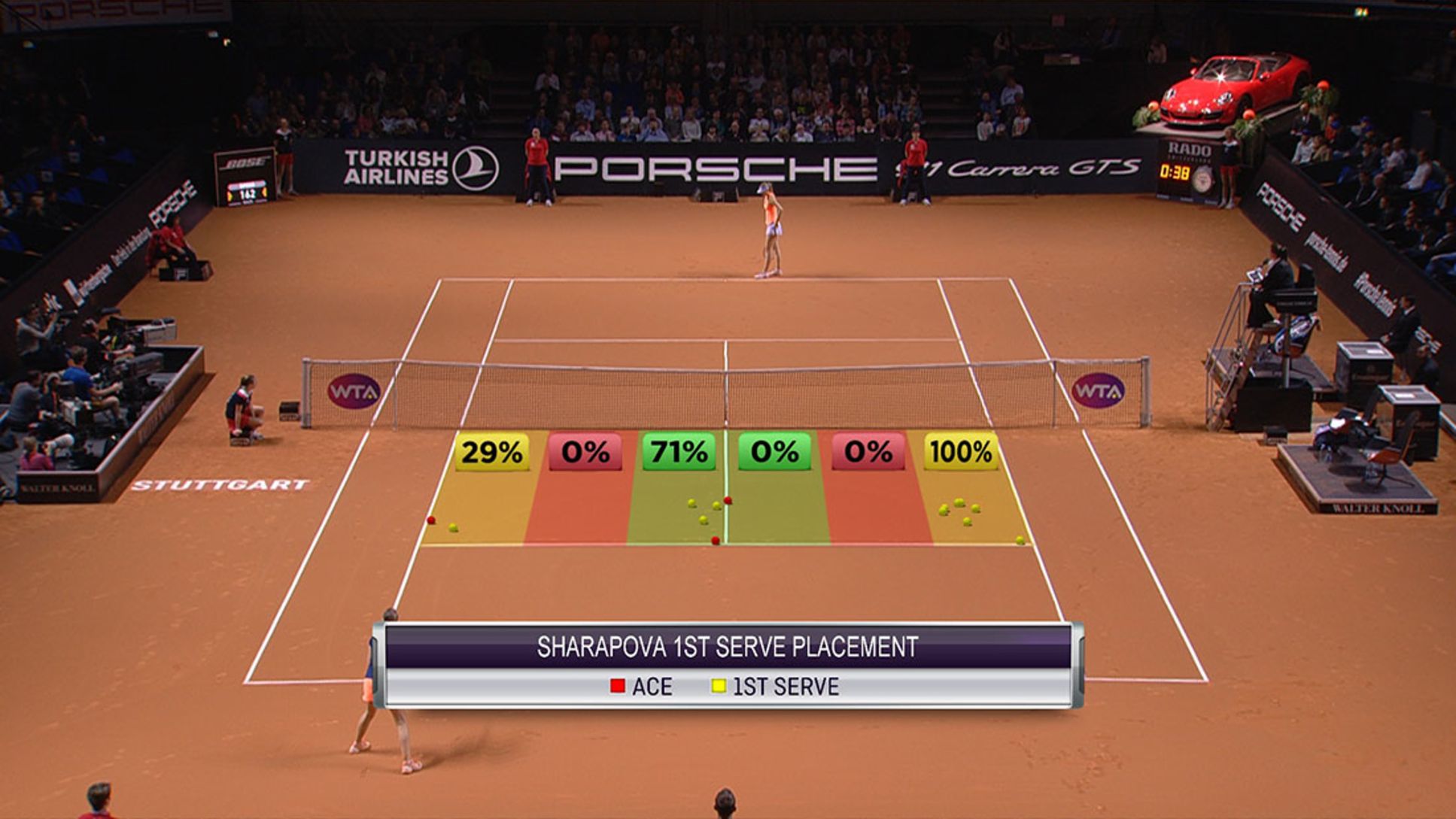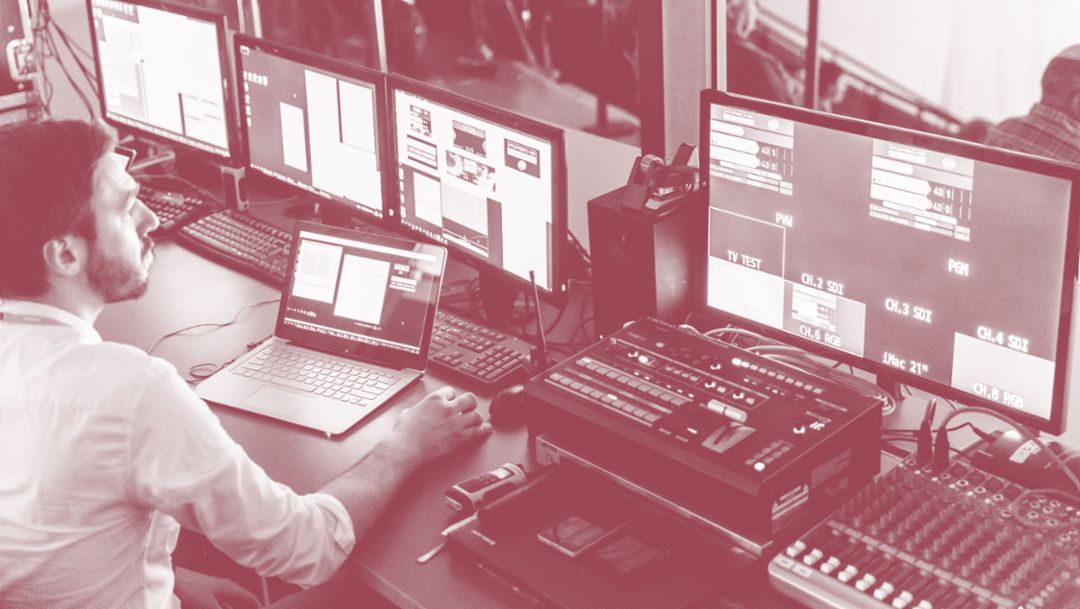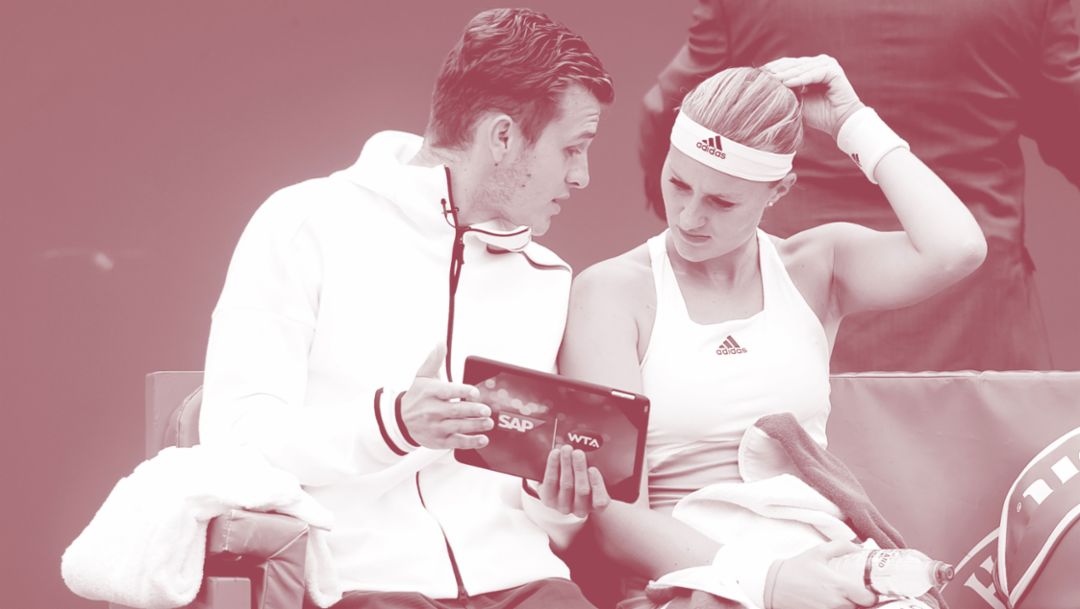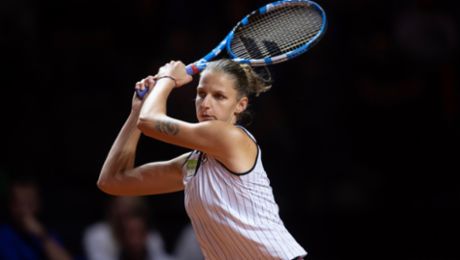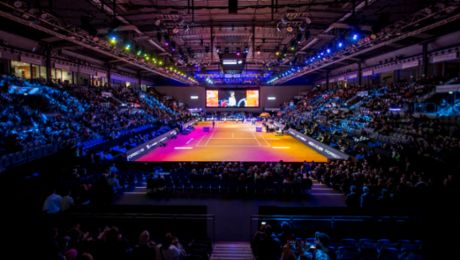The view of the Centre Court through the windows of a room high up in the Porsche Arena is not exactly perfect. However, it doesn’t worry Marek Biolik and his two colleagues from FlightScope. Before the start of the Porsche Tennis Grand Prix, they installed 16 monitors on a wall. There is action to be seen and – data, data and even more data. On top of the table in front of Biolik are laptops on which continually changing bars are flickering. Behind them are cables. The whole thing gives one the impression that spies are at work which probably describes Marek Biolik’s core tasks best of all.
Commissioned by both the ATP and WTA, FlightScope runs the news service that is central to the tennis business: live scoring. Using software developed by FlightScope, the umpire enters the match score into a tablet. From there the data is sent immediately to the ATP and WTA server from where it is distributed in milliseconds to, for instance, TV stations. Or like here in Stuttgart as configured datasets for TV in the indoor arena, the big screen at one end of Centre Court and for the cube high up in the rafters. The players’ service speeds displayed there have also been measured by FlightScope. And a whole lot more is possible.
“With the help of our additional camera-based systems, we can display further information,” says Biolik. “Statistics like second serve ratio, number of unforced errors, forehand errors. FlightScope collects information non-stop whereby the whole system, like the one used at the Porsche Tennis Grand Prix, needs a maximum of 30 megabytes. Alongside FlightScope, the Hawkeye service also aggregates data at the Porsche Tennis Grand Prix. The company has developed a technology whereby ten cameras positioned around the court determine the position of the ball and, if requested, can display it as a 3D-image. In this way, one can show whether the ball landed on the line or not – or with which kind of spin or at what speed the ball is flying through the air. Even more playthings for a man like Milan Cerny.
Together with his colleagues, Cerny has concentrated his attentions on a special project in the past five years. “We recognised,” explains the Technology & Innovation Lead SAP Global Sponsorships “the potential waiting to be tapped in the FlightScope and Hawkeye data.” Cerny’s goal was to develop an on-court coaching solution for coaches who have been allowed to use technical aids – like a tablet – on court since 2015. What’s emerged is a cloud-based app by the name of “SAP Tennis Analytics for Coaches” which is used by the majority of coaches at the Porsche Tennis Grand Prix. In Stuttgart, SAP will make two tablets available per court and they are updated every 15 seconds. Live data may not be used due to possible betting misuse.
“These days I look at the app and have everything I need”
“Four years ago,” says Wim Fissette, the coach of Angelique Kerber, “I noted down my opponent analyses with pencil and paper. Today, I look at the app and have everything I need at a glance.” The SAP app contains not only information displayed in a variety of forms about the ongoing match, it also functions as a historical memory. For instance, one can summon up information like the direction and speed of an opponent’s first serve on a surface like the one used in Stuttgart, and where to hit the best return.
“I really like the functions that track the direction of the serve,” says Sven Groeneveld, once the coach of Ana Ivanovic, Caroline Wozniacki and, up to recently, Maria Sharapova. “One can recognise general behavioural patterns and ones in specific match situations, and they can be visually displayed. Both for my player and for her opponent.” What helps the coach also benefits the player. Groeneveld: “If I can present pure facts to the player then it takes emotionality out of the equation because numbers don’t lie.” However, it is only a part of the truth.
The other is that both contestants on the court and their coaches have access to the same detailed data aggregation. There are therefore no secrets anymore, the players are an open book, they have become more predictable – and here in the era of Tennis 4.0 is the real challenge for coaches. “It leads,” says Wim Fissette, “to one having to instil greater variety within one’s own player.” Therefore, one has to alter one’s match habits which is naturally what the coaches of the opponents will also try. “Today we coaches,” explains Fissette at the end, “have access to more information than ever before. However, in the end it is all the same – you basically have to be better on the court than the person on the other side of the net.”
Info
The Belgian Wim Fissette, 38, began his coaching career at the “tender” age of 29. He guided his countrywoman Kim Clijsters back to the top of women’s tennis in 2009 and the US Open win after she took time off to have a baby. He has also coached Sabine Lisicki, Simona Halep, Victoria Azarenka, Sara Errani and Johanna Konta. Since autumn 2017, the advocate of digital aids, is Angelique Kerber’s new coach. He says, “I’ve often coached against her. When watching her play, I always thought one could get a lot more out of her.” Kerber on Fissette: “We both know what we want and have definite ideas about how to play the game.”
Text first published in Porsche Tennis Magazine 2018.
Text by Thomas Lötz
